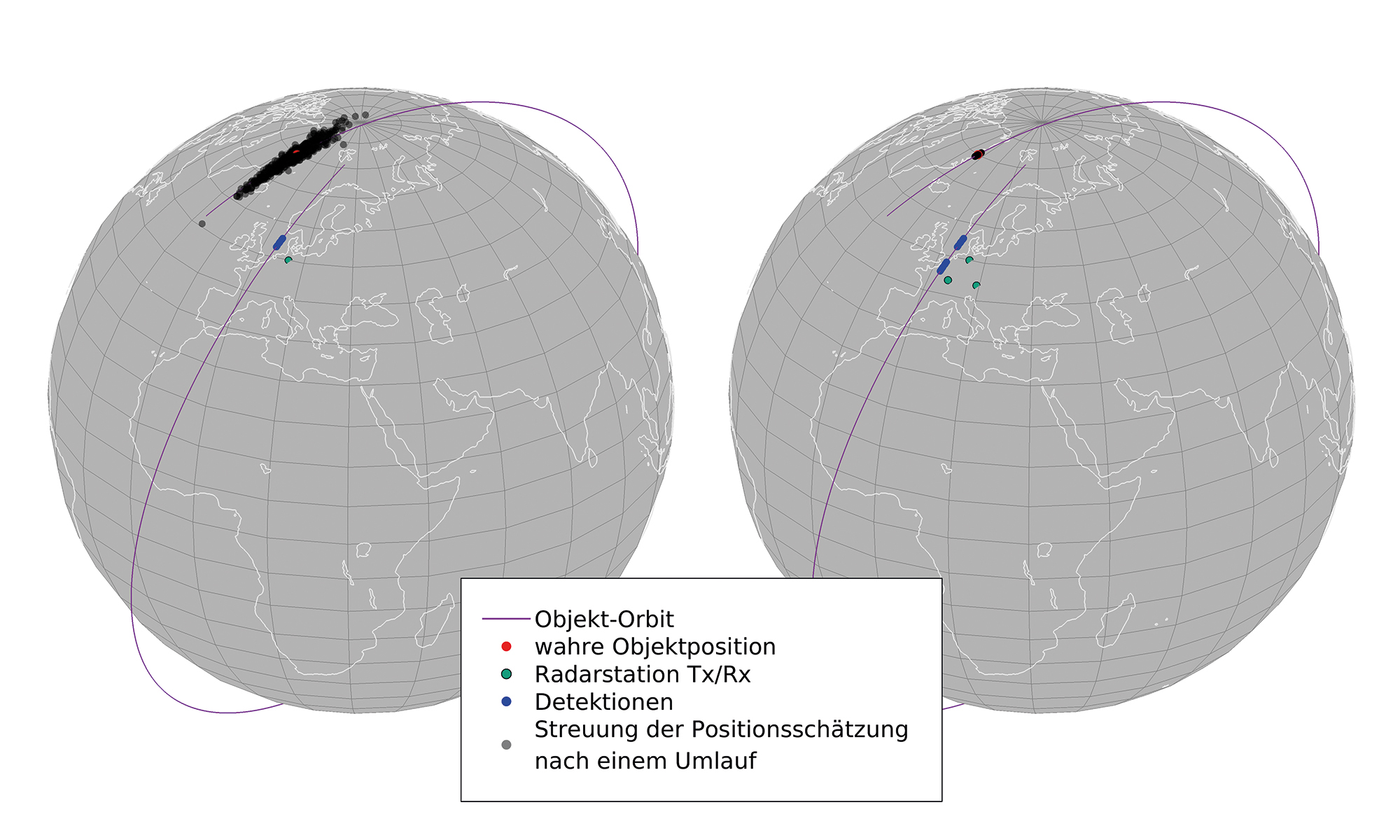Space surveillance using radar networks
We are stronger when we join forces – this is true not only for humans, but for radar systems as well. A study by Fraunhofer FHR in collaboration with Fraunhofer FKIE shows that if radars are interconnected to form networks, this increases the monitoring range, allows more precise positioning and increases the probability of detection, as the signal-to-noise ratio and thus the sensitivity can be optimized.

Is there an imminent danger of space debris colliding with a satellite? Fraunhofer FHR develops and operates various radar systems that monitor space and answer such questions. The amount of space debris is rapidly increasing and even a single screw can disable a satellite. This raises the question how space monitoring using radars can be further improved. Radar networks present one promising possibility. While radar units are located close to each other in local networks, in medium-extent networks they are located several hundred kilometers apart.
Radar networks offer numerous advantages
In collaboration with Fraunhofer FKIE, Fraunhofer FHR investigated the advantages offered by radar networks. The investigation was carried out on behalf of DLR as part of a three-year research project funded by the German Federal Ministry for Economic Affairs and Energy. The results: If the radar systems are looking in different directions, the monitoring area can be significantly increased. In contrast, if they are looking at the same object, its position can be determined much more precisely, since each of the receivers is looking at the object from a different angle. Moreover, the target velocity vector can be determined by measuring at a single point in time, whereas a single radar can only achieve this by means of observations at different times. In addition, the probability of detection can be increased using radar networks compared to the individual radar systems. This is achieved by adding up the signals from the individual radars in the network, such that the noise components partially cancel out each other, allowing for an optimization in the signal-to-noise ratio and thus an increased sensitivity.
Although the extent to which the performance of space surveillance can be increased is dependent on the objects being observed as well as the network geometry and processing, the general rule is: The more radars, the better the performance. In case of three interconnected receivers – and the ideal case of coherent processing – the detection performance improves by up to a factor of three, with four receivers respectively by up to a factor of four, and so on. Fraunhofer FHR, in collaboration with Fraunhofer FKIE, is to continue its investigations in a three-year follow-up project with DLR starting in January 2021. Among other things, the focus here will be on resource management, i.e. the question how radar networks can be operated as efficiently as possible.